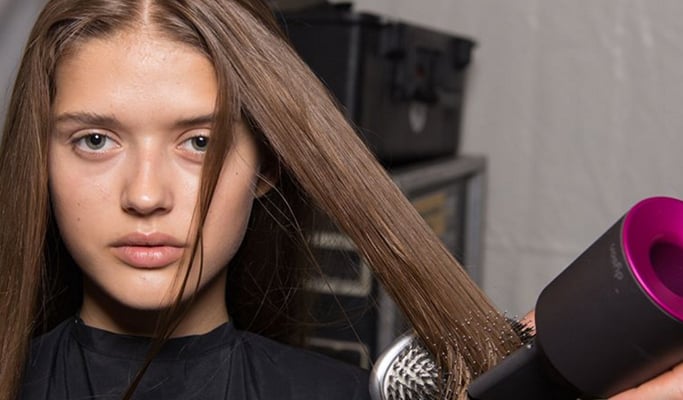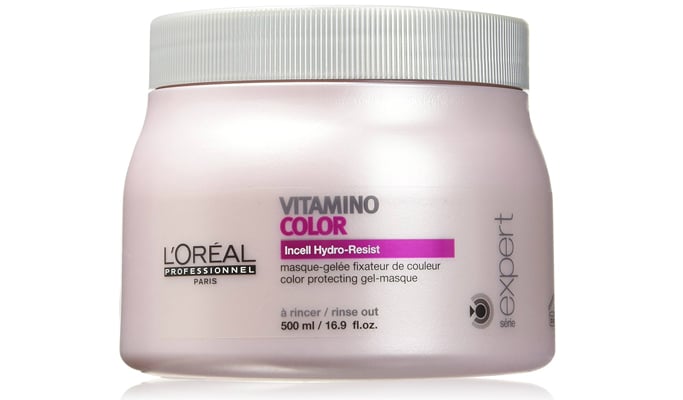Suffering from dry, frazzled locks after a scorching summer? Then read on…
While we all need plenty of Vitamin D in our lives, there’s one part of us that doesn’t love time in the sun – our hair.
If, like us, you’ve been battling parched locks for the last few months, don’t worry – we’ve spoken to the experts to help restore a healthy gloss to those heat-damaged strands.
And the good news is, you only need to make a few small changes to see real difference.
Read:
Six foundation primers worth your money
The beauty products that Amal Clooney used for this look
Here’s the best of the advice we received…
1. “While it’s tempting to wear wet hair out on a hot day, try and dry it with a hair dryer that doesn’t further damage it and dries and styles your hair quickly,” says Dyson engineer Guanzhong Qiu.
“If you go out with wet hair, your naturally weakened hair will dry to its natural shape rather than a defined style, making you more likely to have frizz and flyaways.”
The aim here is to both maintain your style while not stressing your strands. Qiu recommended using Dyson’s Supersonic Hairdryer (Dhs1,499), which contains a smart motor that constantly monitors the heat output, so your hair is never subjected to more than 150 degrees.

But whatever model you use, make use of the cool shot function, urges Qiu, to “set your style and cool yourself down”.
2. Don’t continue to blast your hair once it’s become dry either, warns Qiu.
“Avoid over drying your hair as it will act like a sponge and pull water in from the air, disrupting your style more quickly and resulting in frizz,” he says.
“Make sure you rough dry your hair to 80 per cent dry before styling it with a hair dryer – or completely dry when using a hot styling device like a straightener – to minimise damaging the hair’s cuticle.”
3. Always use a conditioner or hair masque. Well, that seems like a common sense move if you want smooth hair, but Declan McQueenie, stylist at Pastels Salon Ritz Carlton, says it also protects your colour from fading.
“First shampoo, then rinse, then apply a masque,” he advises, recommending L’Oreal Vitamino Colour Masque (Dhs110) and Kérastase Bain Therapiste Masque (Dhs215).

“The masque/conditioner puts a barrier between the colour pigments and the detergents in the shampoo, leaving it nourished and shiny.”
4. Swimming in the sea is much better for your hair than pool water.
“When you go swimming, your hair is exposed to a variety of chemicals,” says Qiu.
“Chlorine is usually present in the water at very low levels, but over time, it can break down some of the structures in the hairs cuticle, leading to increased friction and mechanical damage.”
As unwilling as you might be to pull on a swimming cap, says that’s the best prevention – or at least wear your hair up and out of the water. If you take a dip in the sea, it’s less damaging – but the post-swim rinse is extremely important.
Read:
Bookmark this: Here are Dubai’s best salons and hair stylists
These are the beauty products Huda Kattan really uses
“Salt water doesn’t affect hair much, but as the hair dries, it will leave a thin layer of salt on the surface of the strands. This can increase the friction between strands, increasing apparent hair volume, but also increasing friction and damage when you brush or comb your hair,” says Qiu.

5. While “hair is pretty resilient to UV damage”, according to Qiu, it still can result in colour fading and strands weakening. Aside from staying out of the midday sun and wearing a hat, McQueenie advises using a spray-on SPF for extra protection (like KeraStraight Sun Protect, Dhs124).
“You should always protect your hair and scalp by using an SPF just as you would your skin – this will prevent the scalp from burning and keep the hair colour from fading,” he says.











